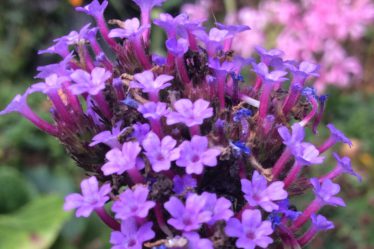
8 Of The Best Late Summer Flowering Shrubs
We need something to take us from mid July through to early Autumn, that is where my 8 Of The Best Late Summer Flowering Shrubs come into their own. These colourful shrubs are low maintenance and easy to grow. They just get on with flowering without any fuss, leaving us with time to keep up with and enjoy other garden tasks.
As gardeners, we strive to grow a variety of plants, trees and shrubs that will provide us with year round interest in our gardens, but towards late summer some perennial and border plants are starting to have had their day in the sun and many shrubs have finished their performance.
You will be familiar with most of the shrubs that I have chosen for this article but I include a couple that you may not have thought of growing, which are well worth your consideration… Hibiscus, Autumn ceanothus and Cestrum parqui.
What Can I Grow For Best Late Summer Flowering Shrubs?
Hibiscus
There are numerous varieties of this lovely, wow factor, late summer flowering, deciduous shrub. Colours are mainly pale pink and white, mauve or pink with red. My favourite is Oiseau Bleu for it’s deep mauve single flowers with a dark red center.
Flowering from mid July into October they are a valuable plant to grow. They combine well with late summer Perennials in the border or as a standalone specimen shrub. They can also be grown in containers.
As our climate warms they are becoming more popular in UK gardens. They love a warm, sunny site with well drained soil. Being tolerant of drought they prove a great choice for hot, sunny, Mediterranean style gardens.
The single flower varieties attract Bees and other pollinators. For more bee friendly plants see bees and butterfly plants
Try:
- Hibiscus Lilac Queen
- H. Oiseau Bleu
- H. Matilde
- H. Woodbridge

8 Of The Best Late Summer Flowering Shrubs
Hypericum
Hypericum are mainly semi evergreen, hardy shrubs that flower from July to September, sometimes into October. With their cheery, golden yellow open flowers they are a welcome sight in late summer. They also offer plenty of food for pollinators, therefore being another great choice for wildlife gardens. Wild flower garden ideas.
Very easy to grow with little maintenance required, except for a light prune in Spring to keep their shape and to remove dead or diseased wood.
They are happy in full sun or semi shade with fertile soil.
Try:
- Hypericum Hidcote
- H. Magical Beauty
- H. John Hillier
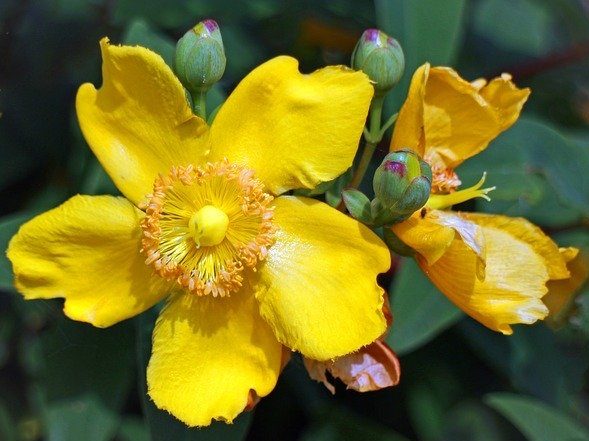
When Should I Prune Summer Flowering Shrubs?
Rose
Most gardeners include roses in their gardens and rightly so. Flowering from late spring right up until mid winter they are an absolute must in my gardens.
Yes, they need a fair amount of love and attention but they certainly reward us ten fold with beautiful blooms and fragrance.
Most varieties need plenty of sunshine but there are some that do well in part shade. As always…right plant, right place equals a better chance of growing success.
Late summer flowering rose shrubs will help to fill gaps in the borders. Alternatively you can select ones that have lovely hips in late summer for added interest in your garden.
We don’t need specific varieties for them to be flowering late summer and into autumn. As I mentioned earlier, if well cared for roses will continue to flower for you long into autumn and winter.
How do I keep my roses blooming all summer? Follow my guide.. How do you Grow Roses? Secrets to Success
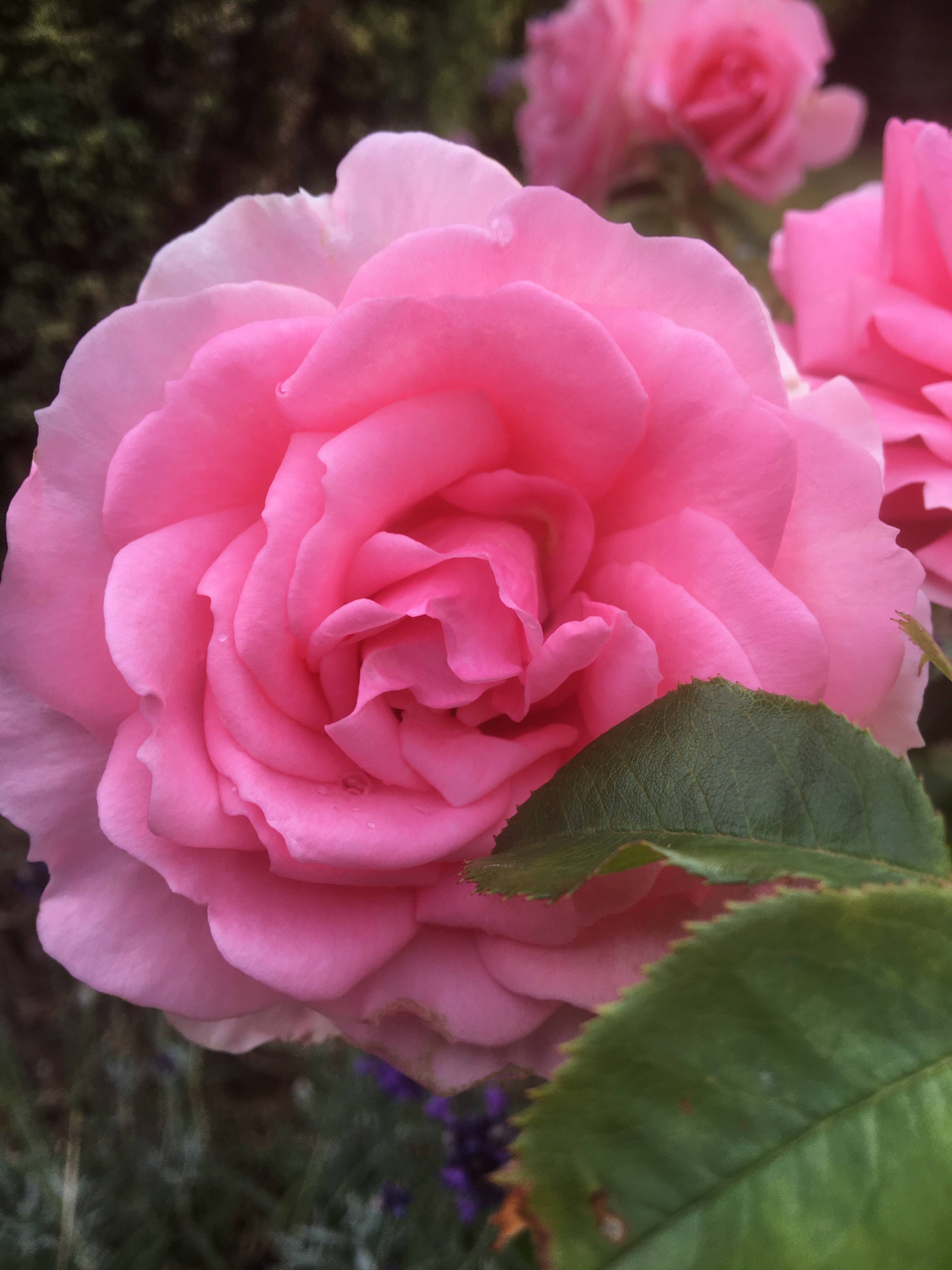
Late Summer Flowering Shrubs
Ceanothus Autumnal Blue
As it’s name suggests Ceanothus Autumnal Blue flowers from July to September.
Masses of pale blue flowers adorn this medium-sized evergreen shrub.
They grow quite quickly and prefer a sunny, well drained site.
Prune in mid spring after all danger of frost has gone.

Lace-cap Hydrangea
Lace-cap hydrangea are very distinctive with their showy, flat flower heads, in pinks, blues or white. They are perfectly suited in herbaceous borders or in shrubberies. They prefer part sunny, shaded locations, in damp, well drained soil. Soil type will determine their colour.
See below for pruning information.
Try:
- Hydrangea Lanarth White, this one is very tough, suitable for most locations including coastal. For more coastal plants see…
- H. Villosa Aspera
- H. Veitchii
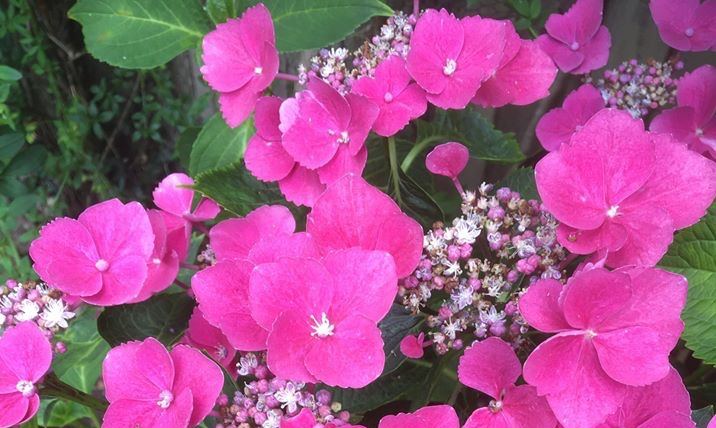
Fuchsia
Fuchsia remain a very popular shrub with many varieties that reliably flower from Ssring onwards. Hardy fuchsia are the best option unless you have a frost free zone. Of course pot grown fuchsia can be moved to a sheltered spot or brought indoors over winter.
Choose late flowering ones to take your garden colour through to Autumn.
The hardy selections make great hedging plants too.
Easy to grow and maintain, hard prune and feed in spring… that’s it. They grow equally well in a sunny or semi shade, sheltered site.
Fuchsia’s are ideal to fill in gaps in the summer borders, some grow tall and are a good filler for the back of the border, some smaller varieties are perfect for container growing.
Try:
- Fuchsia Alba
- F. Delta Sarah
- F. Dollar Princess
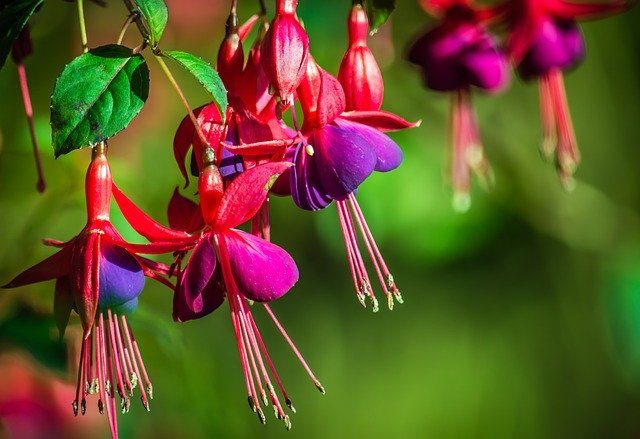
The Best Late Summer Flowering Shrubs
Hebe
Easy to grow with little maintenance or trouble Hebe are a fantastic shrub to include in your garden. Not all are hardy so do choose wisely.
Being evergreen means they are a valuable winter addition as well as a late summer flowering shrub. There are plenty of varieties to choose from and there are spring and mid summer flowering ones too. Prune lightly in spring to keep these shrubs compact.
For late summer into autumn flowering,
Try:
- Hebe Great Orme
- H. Midsummer Beauty
- H. Autumn Glory
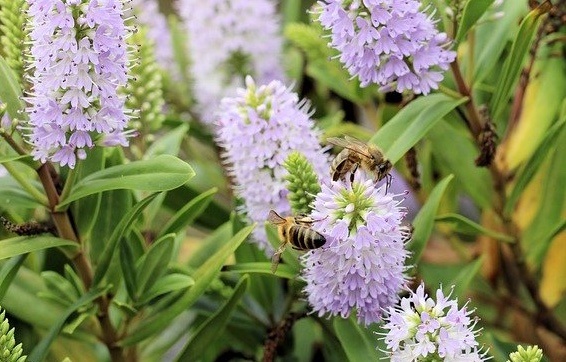
Cestrum Parqui
Cestrum parqui is a beautiful semi evergreen shrub, a more unusual shrub and not widely known here in the UK. Flowering in late summer through autumn it is certainly one to add interest and provides a talking point.
It has willow type leaves that are a deep green, it’s flowers are tubular shape of a yellowish green. They have a strong fragrance in the evening and so are fantastic for pollinating moths, meaning another valuable plant for wildlife.
Winter frosts will prove detrimental to the shrub in that it will die right back but they will produce new growth in spring.
They like a sunny, sheltered spot. Ideal for coastal gardens and for an exotic, jungle theme. Prune back in spring.
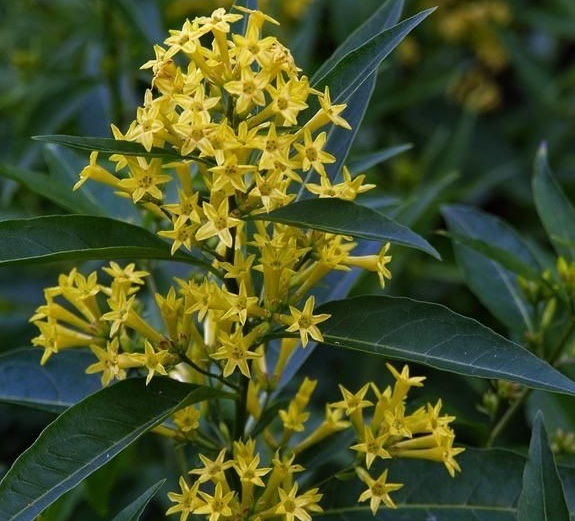
When Should I Prune Late Summer Flowering Shrubs?
As many summer flowering shrubs produce their blooms on the current years’ growth, the time to prune them is late winter or early spring, thus encouraging fresh, new growth, which in turn produces more summer flowers.
Aim to cut out any diseased or damaged wood.
Fast growing plants such as fuchsia and buddleia can be cut right back to about 8 or 10 inches.
Other shrubs mentioned here such as the hebe and ceanothus only require light pruning to maintain shape and to keep them compact.
Hydrangeas are slightly different in that you need to establish which type of hydrangeas you have, as some (hydrangea macrophylla) flower on old wood and others (hydrangea paniculata) bloom on new wood.
Mop head hydrangea produces flowers on old wood and as such should not be pruned hard back. Prune in late winter to early spring after the risk of any frost. Simply take off the spent flowers, cutting back a couple of inches to a pair of new buds. Leaving the flower heads on over winter helps to protect the new shoots from frost damage.
Prune out any dead or diseased stems.
Lace-cap hydrangea are mostly hardy and can be pruned in autumn or spring. Prune lightly to a pair of buds if pruning in spring. Take out any old, diseased or damage stems to ground level.
Conclusion
These are just a few shrubs that will help to lift your borders and shrubberies through the coming months. They add colour, form and fragrance, bridging the gap between early summer flowering shrubs and the onset of autumn foliage.
For more autumn planting ideas take a look at Best plants for autumn colour .
I hope that this article has given you some inspiration and ideas for some late flowering shrubs that you can include in your garden. Prolonging the flowering season is what it’s all about, so go and enjoy looking for your new plants. I assure you that you will find space for them.
Please share with friends and family and on social media. If you have any question or require further help or suggestions please use the comments box below. I always reply as soon as I can.
Happy Gardening.


